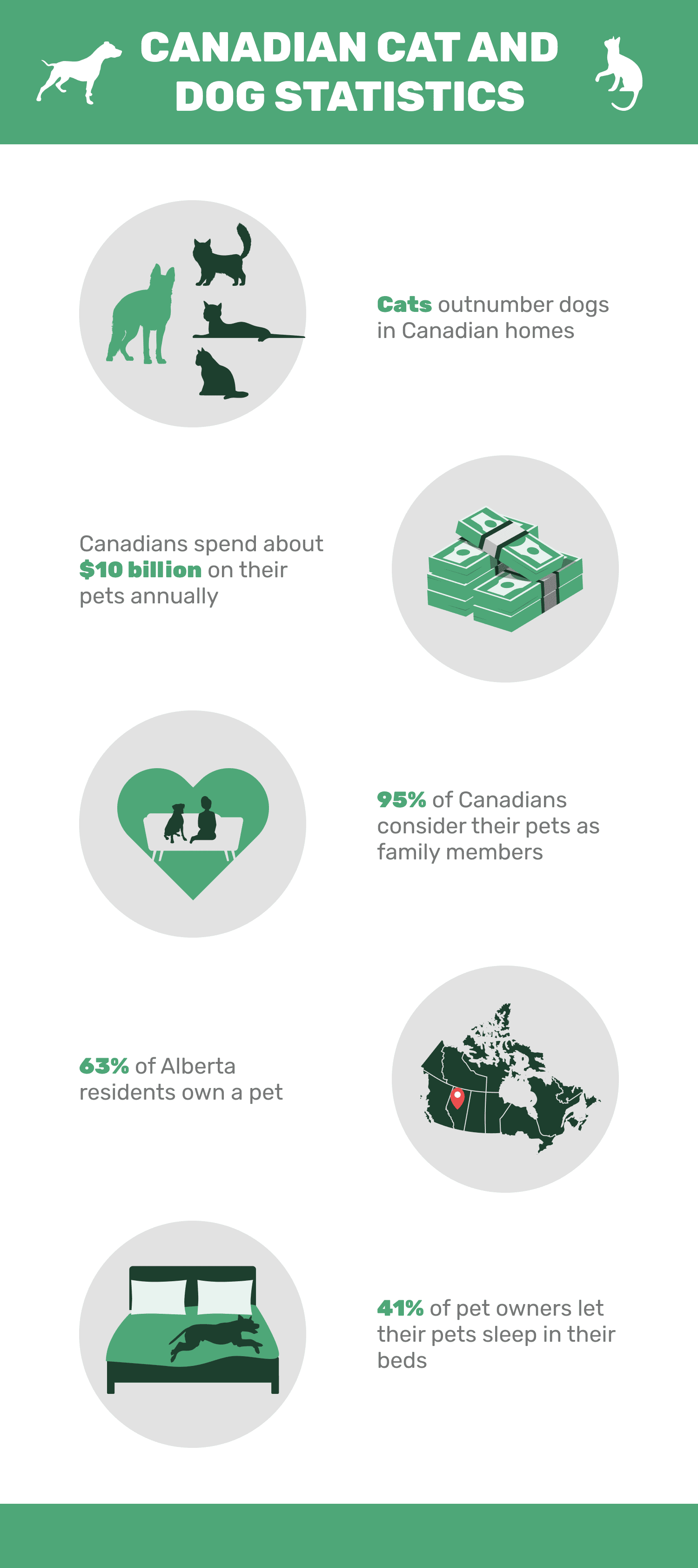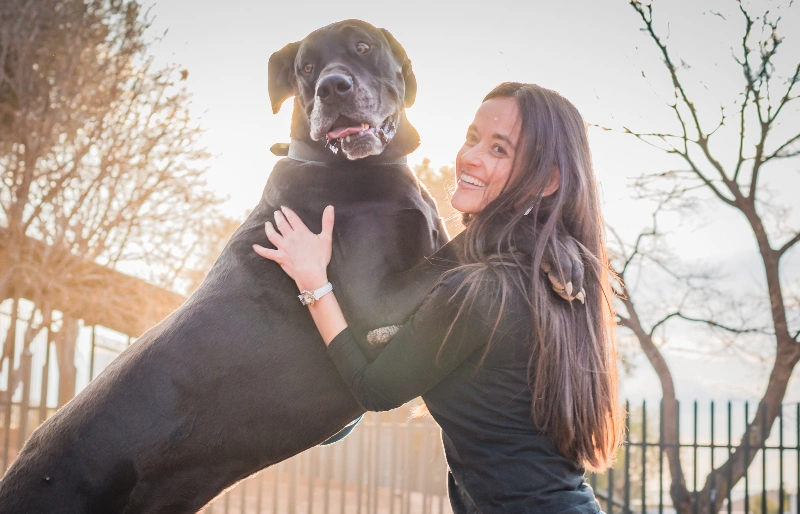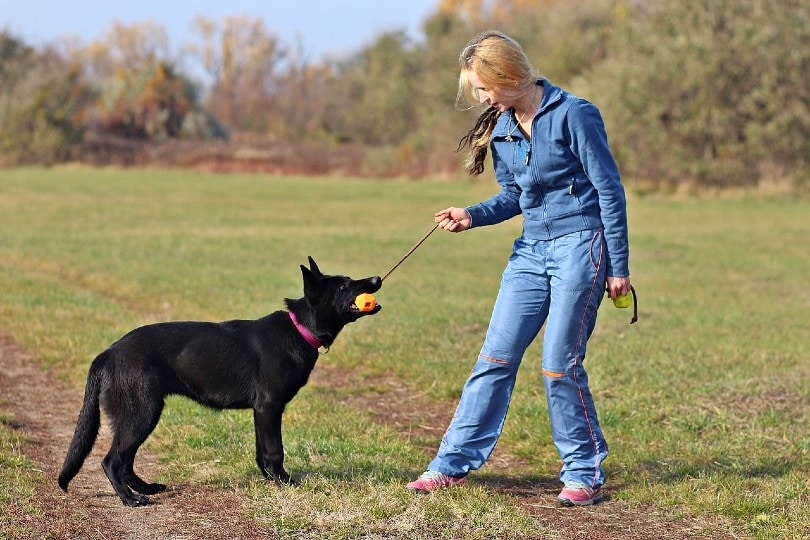Click to Skip Ahead
Note: This article’s statistics come from third-party sources and do not represent the opinions of this website.
We love our pets here in Canada — especially our cats and dogs! They provide us with love and entertainment, they help us in times of loneliness and stress, and they give us unconditional love.
Our cats and dogs are a vital part of our lives, so we collected 18 important statistics about our adorable fuzzy family members.
The 18 Canadian Dog and Cat Statistics
- As of 2021, the province with the most pet stores is Ontario.
- The Yukon, Northwest Territories, and Prince Edward Island are the provinces with the fewest pet stores.
- Shopping in a pet store is still the most common way that Canadians buy their pet food.
- The number of pets in Canada has increased by 0.4% in 4 years.
- Cats outnumbered dogs in Canadian homes in 2020.
- Dogs saw an overall larger increase in Canadian households.
- The most popular size of dog is large.
- There has been an increase of pet ownership in Canada of 18% since March 2020.
- Residents of Quebec and Nova Scotia are more likely to own a cat.
- Alberta has the most pets out of all the other provinces at 63%.
- Millennials were most likely to purchase a pet during the pandemic.
- Canadians spent about $10 billion on their pets in 2020.
- 95% of Canadians consider their pets as members of the family.
- Millennials and women are more likely to treat their pets like children.
- 41% of pet owners have their pets sleep in their beds.
- The top recommendations that vets make to cat and dog owners is weight control advice.
- Most pet owners spend more time on entertainment than exercising their pets.
- Just over half of Canadians believe that their pets are in good health.

Pet Store Statistics
1. As of 2021, the province with the most pet stores is Ontario.
(Statista)
Ontario has about 756 pet stores, with Quebec coming in second with 487 and British Columbia in third with 352.

2. The Yukon, Northwest Territories, and Prince Edward Island are the provinces with the fewest pet stores.
(Statista)
Prince Edward Island has a total of eight, the Yukon has four, and last, the Northwest Territories has two pet stores.
3. Shopping in a pet store is still the most common way that Canadians buy their pet food.
(Statista)
In 2020, purchasing pet food in a physical store had a market share of 76.6%. This compares to only about 20% of Canadians who bought their pet food online. Shopping online is expected to continue to grow, though.
Dog and Cat Population Statistics
4. The number of pets in Canada has increased by 0.4% in 4 years.
(AAFC)
In 2016, there were 27.5 million pets, and by 2020, there were 27.9 million. This increase is unsurprisingly due to the social isolation during the COVID-19 pandemic. These numbers are expected to grow from 28.1 million in 2021 to 28.5 million in 2025.

5. Cats outnumbered dogs in Canadian homes in 2020.
(AAFC)
There were 8.1 million cats in 2016, which went up to 8.2 million in 2020. There were 6.6 million dogs in Canadian households in 2016, which went up to 7.2 million in 2020.
6. Dogs saw an overall larger increase in Canadian households.
(AAFC)
While the cats do outnumber the dogs, dogs saw a much more significant jump in numbers compared to cats — cats had a 0.2% increase, and dogs had a 1.4% increase in numbers.
7. The most popular size of dog is large.
(AAFC)
Large dogs are defined as being over 50 pounds. In Canada, there were 3.2 million large dogs, 2.1 million medium-sized dogs, and 2 million small dogs in 2020. But small dogs saw the largest increase from 2016 to 2020 (1.7 million in 2016 to 2 million in 2020).

8. There has been an increase of pet ownership in Canada of 18% since March 2020.
(Narrative Research)
Since the onset of the COVID-19 pandemic, there have been 18% more pets adopted and purchased by Canadians since mid-March 2020. Over one-half of Canadian households have a pet.
9. Residents of Quebec and Nova Scotia are more likely to own a cat.
(Narrative Research)
Conversely, the residents in the Prairies and British Columbia are more likely to own a dog compared to other regions.
10. Alberta has the most pets out of all the other provinces at 63%.
(Pawzy)
The rest of the provinces are fairly evenly spread in second place, sitting around 55% and 56% pet ownership.
11. Millennials were most likely to purchase a pet during the pandemic.
(Narrative Research)
Millennials are ages 25 to 40 (born between 1981 and 1996), and 38% of this age group purchased pets since the beginning of the pandemic. On the other hand, only 9% of Baby Boomers (born between 1946 and 1964) bought pets at this time.
- You may also be interested in: Canada Pet Obesity Statistics & Facts to Know
Importance of Pets Statistics
12. Canadians spent about $10 billion on their pets in 2020.
(Statistics Canada)
This includes the pets themselves, food, veterinary care, and other services for pets.

13. 95% of Canadians consider their pets as members of the family.
(Pawzy)
47% of households think of their pets as part of the family but not like children, whereas 48% think of their pets as both family members and as children. Of course, this also means 5% of households don’t consider their pets as family members at all.
14. Millennials and women are more likely to treat their pets like children.
(Pawzy)
54% of women and Millennials treat their pets like they are their children. This is particularly true of households that don’t already have children.
15. 41% of pet owners have their pets sleep in their beds.
(Pawzy)
36% of pet owners have their animals sleeping in their beds, and 5% of pets sleep in a child’s bed. Only 6% sleep in a crate and 3% outside, and the rest (24%) sleep on other furniture.
Pet Health Statistics
16. The top recommendations that vets make to cat and dog owners is weight control advice.
(Canada’s Pet Wellness Report)
Veterinarians discuss weight control and feeding guidelines for both species during routine exams, which are followed by dental care and oral health, also for both species.
17. Most pet owners spend more time on entertainment than exercising their pets.
(Canada’s Pet Wellness Report)
Pet owners acknowledge and are aware of the importance of exercise but spend two times as long on the internet and three times as long watching TV as they do exercising and playing with their pets.
18. Just over half of Canadians believe that their pets are in good health.
(Canada’s Pet Wellness Report)
51% of dog owners and 58% of cat owners believe that their pets are in perfect health or have no health problems.

Frequently Asked Questions
Is dog training doing well during the COVID-19 pandemic?
Thanks to the increase in dog ownership during the pandemic, dog training is highly sought after. Many dog training classes are struggling to keep up with the demand. (CBC)
What are the reasons for the higher sales in pet stores?
More pets during COVID means more pet owners are buying supplies. More first-time pet owners and higher sales to customers that already have pets are driving the market. (CBC)
How much does it cost to take care of a cat in Canada?
The average expense of owning a cat in Canada in 2021 is just over $2,500. The top three expenses are dental cleaning, pet insurance, and cat food (in that order). Of course, this amount could be higher or lower, depending on your cat and circumstances. (Statista)

How much does it cost to take care of a dog in Canada?
It’s definitely more expensive to take care of a dog than a cat. The average annual expense for a dog is just over $3,700. The top three expenses are food, pet insurance, and dental cleaning (in that order). (Statista)
What is the biggest concern that veterinarians have for our pets?
According to most veterinarians, the most common mistake that pet owners make is overfeeding their pets. Obesity is a serious issue with many pets, and overfeeding and a lack of exercise are the leading causes. (Canada’s Pet Wellness Report)

 Conclusion
Conclusion
Our relationships with our cats and dogs continue to grow and change as the times change around us. These statistics only highlight how essential our pets are to us and the lengths that we will go to in order to ensure their health and happiness. The COVID-19 pandemic has only increased our reliance on our pets.
We can also expect the numbers to continue to increase. Pet ownership will undoubtedly go up and along with it, the cost of food, training, entertainment, vet bills, and so on. We’re also spending more on quality food and treats for our pets — and they definitely deserve it.
- You may also be interested in: 10 Heartbreaking Canadian Puppy Mill Statistics & Facts to Know
Featured Image Credit: Olezzo, Shutterstock










